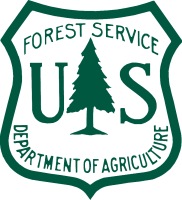The Wind River Forest Dynamics Plot (WFDP) is located in southern Washington, west of the crest of the Cascade Range. The plot lies within the T. T. Munger Research Natural Area of the Gifford Pinchot National Forest. The plot lies within the western hemlock vegetation zone, with the principal tree species being Tsuga heterophylla and Pseudotsuga menziesii. Forest basal area is 62.18 m2 ha-1. Emergent trees are 65 m to 70 m tall. The climate of the WFDP is a cool Mediterranean type. Mean high temperatures in July are 27°C; mean low temperatures in January are -2°C. Annual precipitation averages 2,500 mm, with 73% falling in the winter (November through March).
Overview information can be found in: Lutz, J. A., A. J. Larson, J. A. Freund, M. E. Swanson, and K. J. Bible. 2013. The importance of large-diameter trees to forest structural heterogeneity. PLoS ONE 8(12): e82784. Link: https://doi.org/10.1371/journal.pone.0082784
Our research objectives include mechanistic understanding of tree mortality including the effects of interannual climate variation on the rates and causes of mortality as described in: Lutz, J. A. 2015. The evolution of long-term data for forestry: large temperate research plots in an era of global change. Northwest Science 89(3): 255-269. Link: https://doi.org/10.3955/046.089.0306
Additional Information:
http://wfdp.org | http://westernforestinitiative.org | Understory webcam
Longitude: -121.955800000000


